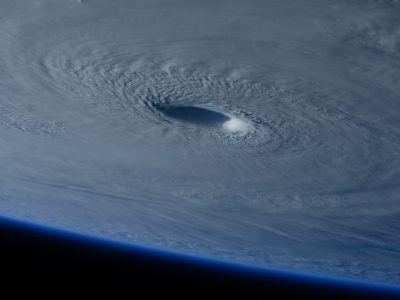Hurricane Harvey and its implications

I visited New Jersey a few months after super-storm Sandy and then before that was Katrina. Historically there have been many disastrous hurricanes along the US east and gulf coasts. Yet questions continue to be asked about the intensity of these more recent storms given where they hit and the exposure of growing population and infrastructure to their impact. And of course, these are just a few of the places on Earth that have been struck this past year by extreme events with loss of life and property. Is there a climate change signal in all this?
An article in The Economist of 2 September informs us while the good news is that storms and flooding have caused fewer deaths in recent decades, the bad news is that storms and floods still account for almost three-quarters of weather-related disasters and are becoming more costly. Three times as many people were living in houses threatened by hurricanes in 2010 compared to 1970 and the global cost of such events is rising by 6% per year. And all this is said to be consistent with a warming world, especially warmer seas. Harvey gained strength before it made landfall by encountering warmer waters and this is what the models would forecast.
Where does land use planning fit into all this? In the article in The Economist the statement is made that “Houston, which has almost no restrictions on land-use, is an extreme example of what can go wrong”. Buildings are allowed inside 100 year floodplain levels, runoff regulations are poorly enforced, maps are not kept up to date, insurance costs are too low; these all make it difficult to reduce impacts in these low-lying coastal areas. And on the open coast the damaging effect of storm surges just keeps recurring on the barrier islands of the Texas coast.
Australia is not immune to these problems. Whether we are dealing with tropical cyclones, east coast lows or Southern Ocean storms, we have seen from past records the way the sea and the atmosphere interact to produce natural disasters. It is that relatively rare but not uncommon coincident occurrence of high seas, high tides, storm surge, and catchment flooding that can be devastating. And the question remains as to our level of preparedness and willingness to take steps to reduce vulnerability to what must occur again and again in future around our coast at places like Busselton, Gippsland Lakes, lower Hunter, Mackay, or Townsville. Our knowledge base has improved; as seen for instance in the OEH NSW document (Guideline on modelling the interaction of catchment flooding and oceanic inundation in coastal waterways). Then there is recognition of this particular hazard in the new NSW Coastal Management Act 2016 that will require councils to consider development controls in areas likely to be adversely impacted by such coincident events. This will all be helpful, but it is a sad reality that the shock and destructive forces of nature are still likely to be underestimated and require the full operation of our emergency facilities and follow-up services.
Words by Prof Bruce Thom. Please respect Bruce Thom’s thoughts and reference where appropriately: (c) ACS, 2017, posted 4 September 2017, for correspondence about this blog post please email admin@australiancoastalsociety.org
#90

